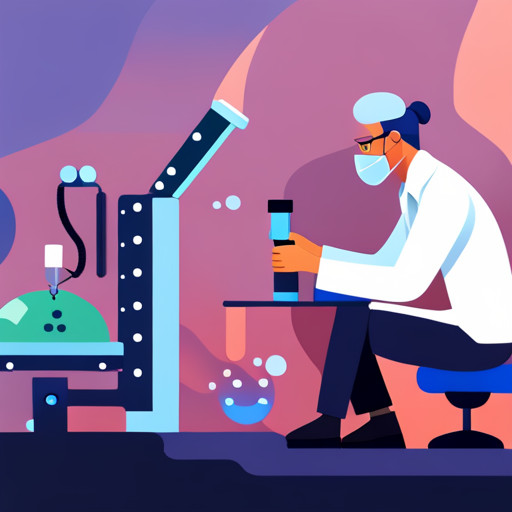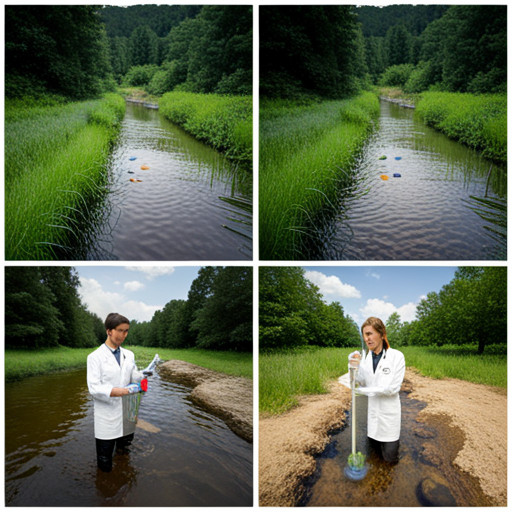Debunking the Threat: Science Behind Toxic Water Carcinogenicity
This article scrutinizes the scientific basis of carcinogenicity in water, exploring the role of toxic substances in increasing cancer risks.

It delves into current research and significant findings on waterborne carcinogens, before discussing mitigative strategies to reduce exposure.
Lastly, it examines future innovations and developments that promise enhanced water safety.
This comprehensive assessment aims to demystify public perceptions surrounding the threat of toxic water carcinogenicity.
Key Takeaways
- Carcinogenicity in water refers to the potential of certain waterborne compounds to induce cancer in living organisms.
- Exposure to water-borne carcinogens is linked to various cancers such as bladder, kidney, liver, and colorectal cancer.
- Mitigation strategies include advanced filtration techniques, rigorous monitoring systems, and enhanced regulatory frameworks.
- Ongoing research, innovations in detection techniques, and advanced filtration systems are essential for managing the global challenge of toxic water carcinogenicity.
Understanding the Concept of Carcinogenicity in Water

The concept of carcinogenicity in water refers to the potential of certain waterborne compounds to induce cancer in living organisms. This Carcinogenicity Definition is a cornerstone of toxicology and epidemiology, aiding scientists and policymakers in identifying, evaluating, and potentially mitigating risks associated with various contaminants.
Water Contamination Sources are diverse, ranging from natural environmental processes to human activities. Geological formations may naturally contain carcinogenic elements such as arsenic or radon that can leach into groundwater. Human-induced sources vary wildly too; industrial waste often contains heavy metals or organic chemicals that may be carcinogenic, while agricultural runoff might introduce pesticides with similar properties.
Assessing the threat posed by these sources requires intricate understanding of both their nature and the mechanisms through which they act. For example, some compounds might become carcinogens only after undergoing specific metabolic transformations within a body; others could interact synergistically with one another or with other environmental factors to increase their overall risk.
The capacity for waterborne contaminants to cause cancer also depends on multiple variables including concentration levels, frequency and duration of exposure, as well as individual susceptibility – all factors that contribute to assessing a substance's overall carcinogenicity.
Research continues in this field to provide more precise estimates of risk associated with different substances under different conditions. This information serves not only towards improving public health interventions but also forms an integral part of regulatory decisions about allowable levels of various contaminants in drinking water supplies.
The Role of Toxic Substances in Water-Related Cancer Risks

Understanding the role of harmful substances in water-related cancer risks necessitates a comprehensive exploration of their molecular mechanisms and interactions with human cells. Carcinogenic compounds, found in various water sources, disrupt cellular functions leading to abnormal growths or neoplasms. The detection and identification of these carcinogens are paramount for risk assessment and mitigation strategies.
Carcinogens Detection Techniques have evolved significantly over time, employing sophisticated analytical methods such as mass spectrometry, high-performance liquid chromatography (HPLC), and biosensors. These techniques enable more accurate identification of carcinogenic substances at trace levels, allowing for timely intervention measures.
The implications on public health are profound; exposure to water-borne carcinogens is linked to a myriad of cancers including bladder, kidney, liver and colorectal malignancies amongst others. This has driven scientific investigation into advanced filtration systems that reduce exposure while ensuring safe consumption standards.
In addition to technological advancements in detection and mitigation strategies, effective communication channels need to be established between scientists, public health officials and communities at risk. Providing accessible information about potential hazards can empower individuals to make informed decisions about their water sources thereby reducing potential exposure.
While considerable strides have been made in understanding the molecular behaviour of toxic substances in relation to cancer development, it remains an active area of research due to its complexity. Continued refinement in Carcinogens Detection Techniques coupled with robust public health initiatives will play a pivotal role in managing this global challenge.
Scientific Research and Findings on Waterborne Carcinogens

Scientific research and findings on waterborne carcinogens reveal a nexus between these pollutants and increased cancer risks, underscoring the need for efficient detection techniques, robust filtration systems, and comprehensive risk communication strategies. Various studies have elucidated the correlation between exposure to carcinogenic substances in contaminated water and the onset of specific types of cancers.
Carcinogen classification is an integral part of understanding their health impacts. The International Agency for Research on Cancer (IARC) classifies carcinogens into four groups based on their potential to induce cancer: Group 1 being 'carcinogenic to humans', while Group 4 represents 'probably not carcinogenic to humans'. Many chemicals found in polluted water fall under Groups 1 and 2A ('probably carcinogenic to humans'), such as arsenic, cadmium, chromium VI compounds, and several organic pollutants.
The health impacts of such substances are wide-ranging. Long-term ingestion or inhalation can lead to various forms of cancer including skin, lung, bladder, kidney and liver cancers. Moreover, it has been observed that children exposed to these pollutants may develop neurobehavioral disorders.
Detection techniques continue evolving with advancements in technology; however challenges remain in accurately identifying low levels of certain contaminants. Filtration systems also play a pivotal role in reducing exposure risks by removing most contaminants from drinking water supplies.
Mitigation Strategies: Reducing Exposure to Toxic Water

Mitigation strategies aiming at reducing exposure to carcinogenic pollutants in water supplies encompass a broad range of approaches, including advanced filtration techniques, rigorous monitoring systems and enhanced regulatory frameworks. Filtering techniques have significantly evolved over the years; this evolution is characterized by increased efficiency in targeting and eliminating harmful contaminants. Technologies such as activated carbon filters, reverse osmosis systems, and ultraviolet sterilization units are employed depending on the nature of the pollutants.
Health policies play a critical role in ensuring these technologies' application is both effective and widespread. Regulatory agencies like the Environmental Protection Agency (EPA) in the United States enforce standards for safe drinking water under acts such as the Safe Drinking Water Act. These regulations require public water systems to monitor for specified contaminants and treat any detected presence to levels below those stipulated by health-based standards.
Despite these advancements, challenges remain. For instance, small community water systems often struggle with meeting regulatory requirements due to limited resources. Additionally, not all harmful substances are equally regulated or even identified - hence they could evade standard testing mechanisms.
Research indicates that risk assessment models should incorporate population vulnerability factors like age and health status when setting contaminant thresholds since certain groups may be more susceptible to harm from exposure than others.
The Future of Water Safety: Innovations and Developments

Innovations and developments in the field of water safety promise a future where exposure to harmful contaminants could be significantly reduced, if not entirely eliminated. Central to these advancements are improvements in water filtration technology and contaminant detection systems.
Water filtration advancements have revolutionized the process of removing pollutants from drinking supplies. Nanotechnology, for instance, has proven remarkably effective at eliminating almost all forms of impurities, including heavy metals and dangerous microorganisms. The increased surface area provided by nanoscale materials facilitates more efficient adsorption processes, rendering this method superior to traditional filtration techniques.
Simultaneously, progress is being made in the development of contaminant detection technologies that can identify hazardous substances at trace levels with unprecedented accuracy. Biosensors equipped with advanced bio-recognition elements have emerged as powerful tools for detecting specific toxins within complex mixtures. These devices offer real-time monitoring capabilities and are compact enough to be incorporated into portable testing kits.
Machine learning algorithms also play a crucial role in improving water quality assessment methods. By analyzing patterns within large datasets collected from various sources - such as satellite imagery or local weather reports - these programs can predict potential contamination events with remarkable precision.
However, despite these promising advances, it should be noted that challenges remain regarding their widespread implementation due to factors such as cost and infrastructural limitations. It is therefore vital that research efforts continue unabatedly towards finding economical solutions that do not compromise on efficiency or accuracy while ensuring universal access to safe drinking water.
Frequently Asked Questions
How Can Individuals Test Their Home Water Supply for Potential Carcinogens?
Testing home water supply for potential carcinogens requires utilization of specialized testing kits or professional services, followed by implementation of appropriate carcinogen removal techniques and water filtration systems if required.
What Are Some Common Signs or Symptoms That Could Indicate a Person Has Ingested Water Contaminated With Carcinogens?
Common symptoms indicating ingestion of water contaminated with carcinogens may include digestive system disturbances, unexplained weight loss, and fatigue. Preventive measures encompass regular water testing and installation of appropriate filtration systems.
How Does the Concentration of Carcinogens in Water Affect the Risk of Developing Cancer?
The risk of developing cancer escalates with increased concentration of carcinogens in water. Stringent global carcinogens regulations and effective carcinogen removal techniques are essential to mitigate this health hazard.
Are There Any Specific Population Groups More Vulnerable to the Effects of Carcinogenic Substances in Water?
Certain population groups, particularly those with compromised immune systems and the elderly, exhibit increased vulnerability to carcinogenic substances in water due to higher carcinogens absorption rates and inefficient carcinogenic water filtration capabilities.
Can Carcinogenic Substances in Water Affect Pets and Wildlife in the Same Way as Humans?
Carcinogenic substances in water may indeed affect pets and wildlife similarly to humans, with variations due to species-specific sensitivities. Research into pet carcinogenicity and wildlife toxicity remains crucial for comprehensive risk assessment.
Conclusion
In conclusion, the understanding and mitigation of waterborne carcinogens represent critical aspects of public health.
Scientific research has significantly enhanced knowledge regarding this issue, paving the way for innovations in water safety.
Future developments are expected to further reduce exposure to toxic substances in water, thereby diminishing associated cancer risks.
The continuous evolution of this field showcases the importance of science in resolving environmental health challenges.

This post has been generated by AI and was not reviewed by editors. This is Not legal advice. Please consult with an attorney.




